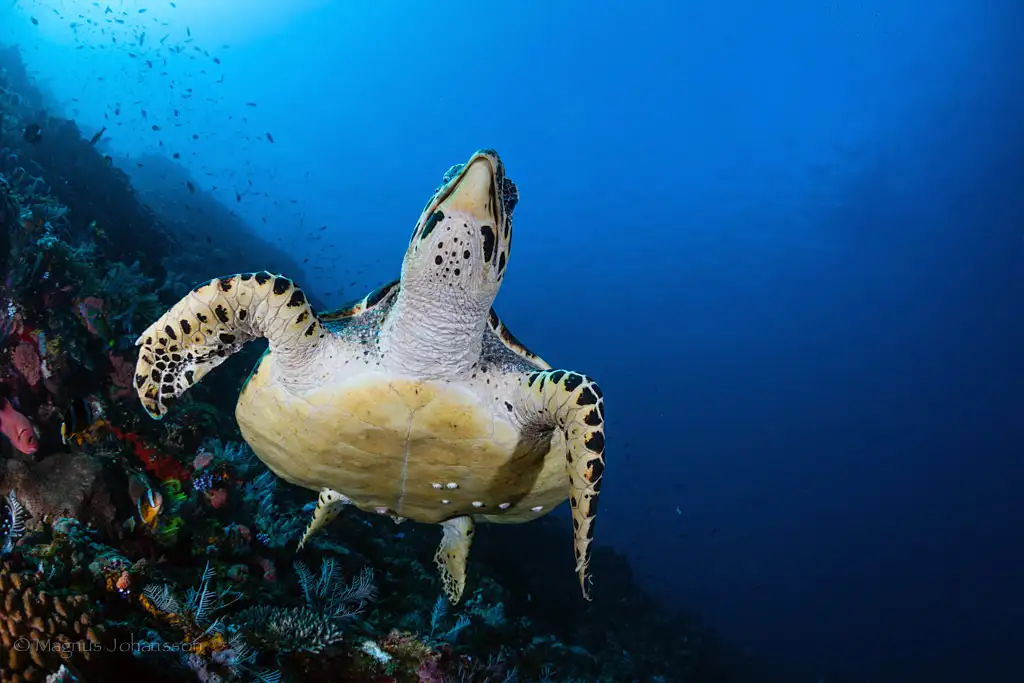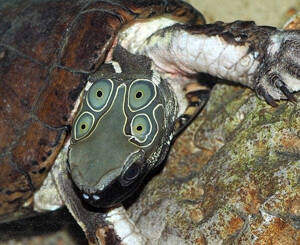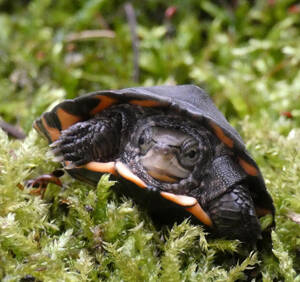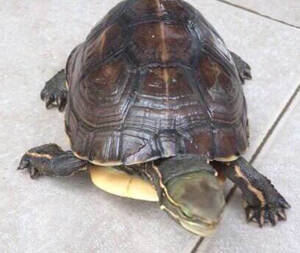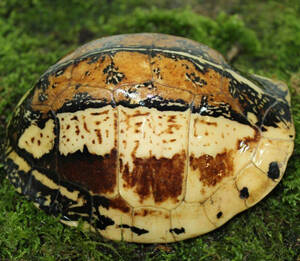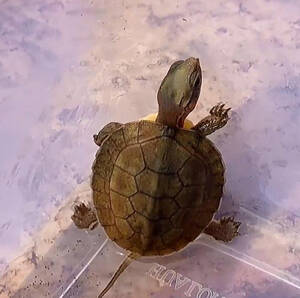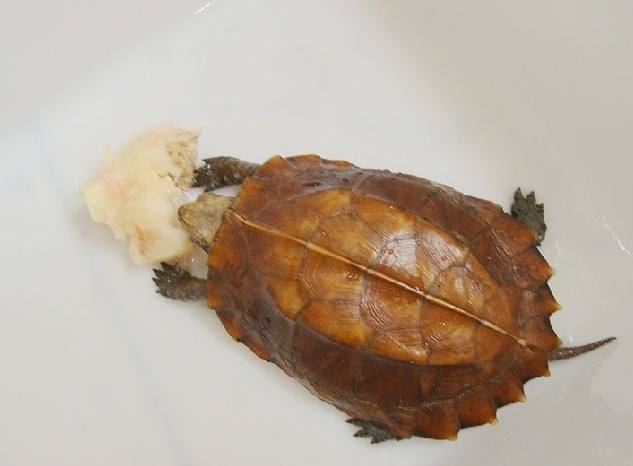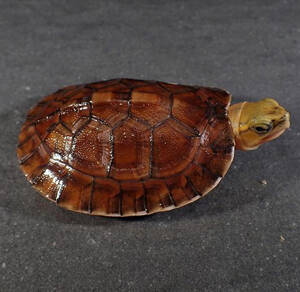Cuora galbinifrons
IUCN
LCBasic Information
Scientific classification
- name:Cuora galbinifrons
- Scientific Name:Cuora galbinifrons,Indochinese Box Turtle,Hainan box turtle, yellow-fronted box turtle
- Outline:Testudines
- Family:Testudinidae B.turtle
Vital signs
- length:11-17cm
- Weight:500-800g
- lifetime:30-50years
Feature
The dry season has a hibernation period of nearly 4 months
Distribution and Habitat
Distributed in Vietnam, Laos and China. In China, in addition to being found in Dali, Nanxi, Diaoluo Mountain in Lingshui County of Hainan Island and Jianfengling in Ledong County, it is also distributed in Xiaodong Township, Longzhou and other places in Qinzhou, Guangxi.
Appearance
The body is medium-sized, with a carapace length of 83 to 186 mm and a width of 68 to 129 mm; the shell height is 40 to 92 mm, and the shell height is about half of the shell length. The head is of moderate size, 20.5 to 28.5 mm wide, about one-third of the carapace width. The snout is slightly longer than the upper jaw, and the upper jaw margin is straight, without notches or hooks. The lower jaw is slightly short, the top of the head is smooth, and the occipital area is covered with small scales. The eyes are large, and the eye diameter is larger than the snout length. The carapace is raised, with a ridge in the midline, and the front and rear edges of the carapace are rounded without obvious notches. The front and rear edges of the carapace are slightly turned upward, and some specimens are slightly serrated. The cervical shield is extremely narrow and long, with 5 vertebral shields, which are wider than long, but narrower than the adjacent rib shields. The front edges of 1 to 4 or
Details
The foreign name of the yellow-fronted box turtle is Indochinese Box Turtle, and there is no subspecies.

The yellow-fronted box turtle likes to live in streams and shallow water areas in hilly and mountainous areas, and often hides in fallen leaves under the forest. It is diurnal and often lives by streams in the mountains from March to July. It hibernates for nearly 4 months in the dry season. There is also a clear intermittent period in the rainy season, and the range of activities in the rainy season is larger than that in the dry season. It has high requirements for environmental temperature and poor adaptability. It generally does not eat when the environment changes. It has a strong tendency to live on land. It often appears by the water and can move in shallow water. It is not good at swimming. It is usually very timid and difficult to raise. Yellow-fronted box turtles caught in the wild generally have anorexia. Most of them are omnivorous and mainly feed on carnivorous baits. The main foods are: insects, fish, shrimp, green vegetables, tomatoes, fruits, etc. The optimal temperature for living in the wild is 24-28℃.
The breeding period of yellow-fronted box turtles is from June to October every year. The eggs are white, oblong, 3 cm in diameter, 6 cm long, and weigh about 12 grams. 1 to 3 oval eggs can be produced each time.
The breeding method of the yellow-fronted box turtle is basically similar to that of the yellow-margined box turtle. However, compared with the yellow-margined box turtle, this turtle is very timid and should be disturbed as little as possible when it is first raised, otherwise it will refuse to eat for a long time. When raising this turtle, the relative humidity should be maintained at 65-80% under normal conditions. The breeding temperature should be controlled at around 28℃, and the lowest temperature in winter should not be lower than 15℃, and it should not be kept in a low temperature environment for a long time. The hibernation period is relatively short.
In China, only Hainan has conducted a special investigation and study on the population size and current status of the yellow-fronted box turtle. For example, the research results in Diaoluo Mountain show that the population density of the yellow-fronted box turtle in the natural forest is only 0.79 per square kilometer, and due to human hunting and habitat destruction, the wild population is distributed in an island-like manner. Therefore, the wild population of the yellow-fronted box turtle in Hainan is in danger and urgently needs to be protected. Artificial breeding is only a small amount in Hainan, Guangdong and other provinces, and the breeding technology is not yet mature. It can only reproduce the first generation, and there is no report of the second generation.
Listed in the "Red List of Endangered Species of the World Conservation Union" (IUCN 2015 ver 3.1) - Critically Endangered (CR).
Listed in the "Convention on International Trade in Endangered Species of Wild Fauna and Flora" (CITES) - Appendix II.
Listed in the "China Biodiversity Red List - Vertebrate Volume" (Reptiles) - Critically Endangered (CR).
Listed in the "National List of Terrestrial Wildlife with Important Economic and Scientific Research Value" issued by the State Forestry Administration of China on August 1, 2000.
Listed in the "China Red Book of Endangered Animals" - Critically Endangered (CR).
Listed in the "China National Key Protected Aquatic Wildlife List Revised by the Ministry of Agriculture in 2000" - Level II.
Protect wild animals and stop eating game.
Maintaining ecological balance is everyone's responsibility!

